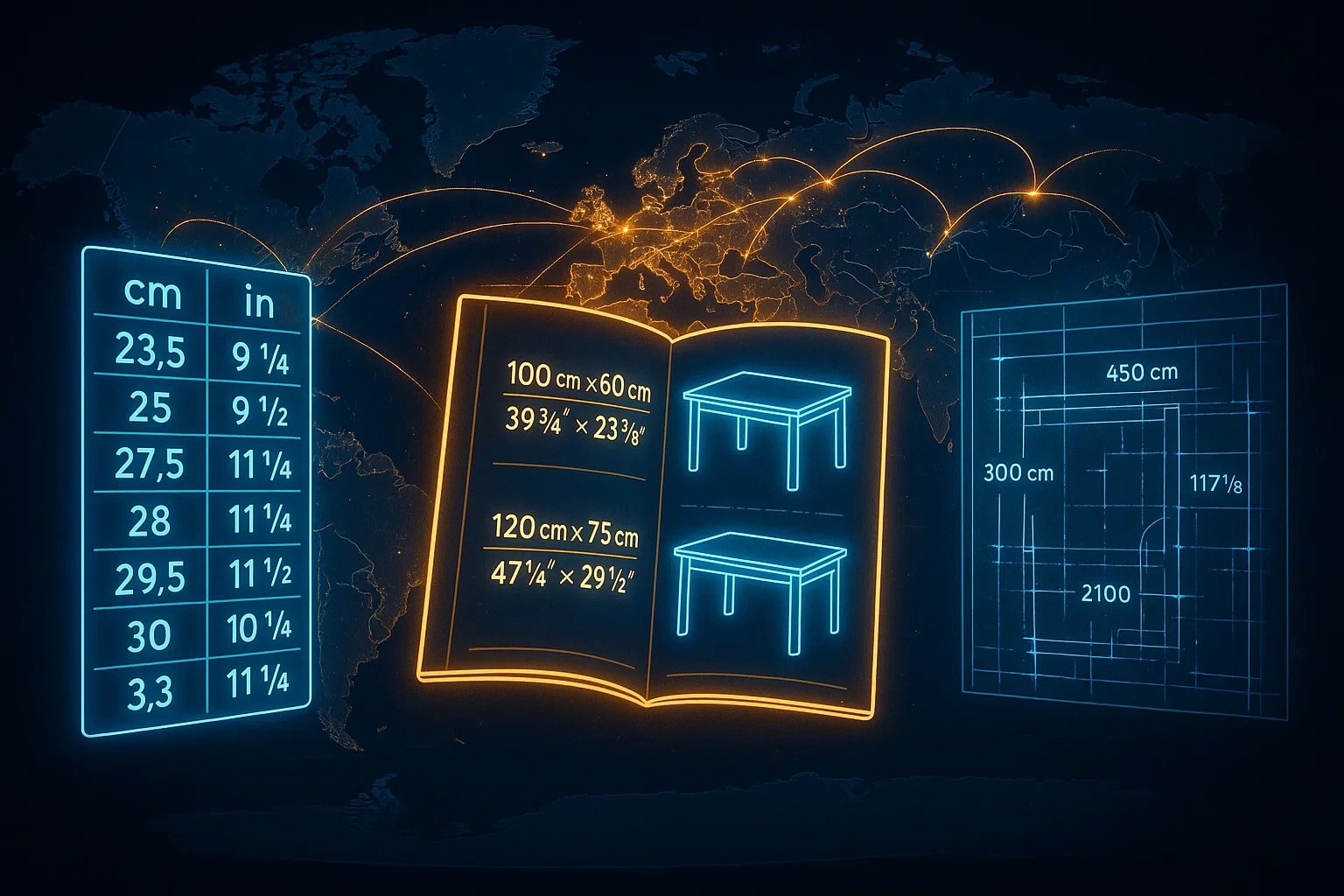centimeter to inch – How to convert cm to in
Switching from centimeters to inches is one of the most common conversions, especially in international contexts. Centimeters belong to the metric system, widely used around the globe, while inches are part of the imperial system, still common in the United States and a few other countries. Knowing how to convert cm to in helps bridge design standards, clothing sizes, product dimensions, and global trade.
What is a Centimeter (cm)?
A centimeter equals one hundredth of a meter. It is widely used in science, education, and everyday measurements like paper size, height, and furniture. For most of the world, the centimeter is part of daily life, linked to the decimal-based metric system.
What is an Inch (in)?
An inch, symbol in, is a unit from the imperial system. It is defined as exactly 25.4 millimeters or 2.54 centimeters. Inches are commonly used in the United States, Canada (for some applications), and the United Kingdom. From TV screens to shoe sizes, inches remain a cultural and commercial standard.
How to Convert cm to in
The conversion formula is:inch = centimeter × 0.393701
Example Conversion
Let’s say you want to convert 50 cm into inches:inch = 50 × 0.393701 = 19.685 in
Rounded to two decimals:50 cm ≈ 19.69 in
This formula is especially handy in design or retail, where products may be labeled in both systems.

Do you know?
-
The centimeter was introduced during the French Revolution as part of the newly born metric system in 1793.
-
The inch has ancient roots, originally based on the width of a human thumb. Historical records show it varied across cultures until it was standardized at exactly 2.54 cm in 1959.
-
Computer monitors and TV screens are still advertised in inches. A 32-inch screen is about 81 cm diagonally.
-
In the fashion industry, waist and inseam sizes are often listed in inches in the US, but the same products are measured in centimeters in Europe and Asia.
Global Design and Trade: Where cm Meets in
In the late 20th century, as globalization accelerated, manufacturers faced the challenge of producing goods for both metric and imperial markets. Furniture companies, for example, designed tables in centimeters but often had to export product catalogs in inches for US buyers.
A famous case was in the clothing industry: international shoe companies had to create size charts that included both centimeters (for foot length) and inches (for American size charts). Without careful conversion, shipments risked being returned or mismatched, leading to losses.
Even architecture felt this divide. Buildings designed in Europe had to provide secondary inch-based measurements when collaborating with American contractors. This often meant architects would draft blueprints in centimeters, then add inch equivalents to ensure compatibility.
These stories show how a simple formula — moving between centimeters and inches — smooths out complex international collaboration. What looks like a tiny difference on paper can mean seamless cooperation or costly mistakes in practice.

From the Ruler to the Runway
The conversion from centimeters to inches is more than a mathematical exercise; it connects cultures, industries, and everyday life. While centimeters represent the global standard, inches continue to define screens, clothes, and construction in key markets.
Once you master the simple formula, you’ll be ready to navigate measurements across both systems — whether you’re buying clothes abroad, reading a blueprint, or checking the size of your new TV.
For exploring related conversions, the Length Converter or the full set of Conversion Tools can guide you through a wide range of unit changes beyond just cm to in.

